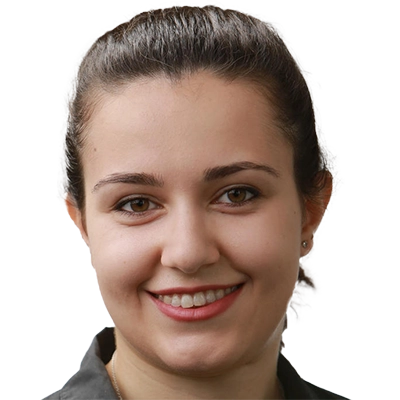29.09.2023

MCML at ICCV 2023: Eleven Accepted Papers (9 Main, and 2 Workshops)
IEEE/CVF International Conference on Computer Vision (ICCV 2023). Paris, France, 02.10.2023–06.10.2023
We are happy to announce that MCML researchers have contributed a total of 11 papers to ICCV 2023: 9 Main, and 2 Workshop papers. Congrats to our researchers!
Main Track (9 papers)
MapFormer: Boosting Change Detection by Using Pre-change Information.
ICCV 2023 - IEEE/CVF International Conference on Computer Vision. Paris, France, Oct 02-06, 2023. DOI GitHub
Abstract
Change detection in remote sensing imagery is essential for a variety of applications such as urban planning, disaster management, and climate research. However, existing methods for identifying semantically changed areas overlook the availability of semantic information in the form of existing maps describing features of the earth’s surface. In this paper, we leverage this information for change detection in bi-temporal images. We show that the simple integration of the additional information via concatenation of latent representations suffices to significantly outperform state-of-the-art change detection methods. Motivated by this observation, we propose the new task of Conditional Change Detection, where pre-change semantic information is used as input next to bi-temporal images. To fully exploit the extra information, we propose MapFormer, a novel architecture based on a multi-modal feature fusion module that allows for feature processing conditioned on the available semantic information. We further employ a supervised, cross-modal contrastive loss to guide the learning of visual representations. Our approach outperforms existing change detection methods by an absolute 11.7% and 18.4% in terms of binary change IoU on DynamicEarthNet and HRSCD, respectively. Furthermore, we demonstrate the robustness of our approach to the quality of the pre-change semantic information and the absence pre-change imagery.
MCML Authors

Maximilian Bernhard
Dr.
* Former Member
FRAug: Tackling Federated Learning with Non-IID Features via Representation Augmentation.
ICCV 2023 - IEEE/CVF International Conference on Computer Vision. Paris, France, Oct 02-06, 2023. DOI
Abstract
Federated Learning (FL) is a decentralized machine learning paradigm, in which multiple clients collaboratively train neural networks without centralizing their local data, and hence preserve data privacy. However, real-world FL applications usually encounter challenges arising from distribution shifts across the local datasets of individual clients. These shifts may drift the global model aggregation or result in convergence to deflected local optimum. While existing efforts have addressed distribution shifts in the label space, an equally important challenge remains relatively unexplored. This challenge involves situations where the local data of different clients indicate identical label distributions but exhibit divergent feature distributions. This issue can significantly impact the global model performance in the FL framework. In this work, we propose Federated Representation Augmentation (FRAug) to resolve this practical and challenging problem. FRAug optimizes a shared embedding generator to capture client consensus. Its output synthetic embeddings are transformed into client-specific by a locally optimized RTNet to augment the training space of each client. Our empirical evaluation on three public benchmarks and a real-world medical dataset demonstrates the effectiveness of the proposed method, which substantially outperforms the current state-of-the-art FL methods for feature distribution shifts, including PartialFed and FedBN.
MCML Authors

Ahmed Frikha
Dr.
* Former Member
To adapt or not to adapt? Real-time adaptation for semantic segmentation.
ICCV 2023 - IEEE/CVF International Conference on Computer Vision. Paris, France, Oct 02-06, 2023. DOI
Abstract
The goal of Online Domain Adaptation for semantic segmentation is to handle unforeseeable domain changes that occur during deployment, like sudden weather events. However, the high computational costs associated with brute-force adaptation make this paradigm unfeasible for real-world applications. In this paper we propose HAMLET, a Hardware-Aware Modular Least Expensive Training framework for real-time domain adaptation. Our approach includes a hardware-aware back-propagation orchestration agent (HAMT) and a dedicated domain-shift detector that enables active control over when and how the model is adapted (LT). Thanks to these advancements, our approach is capable of performing semantic segmentation while simultaneously adapting at more than 29FPS on a single consumer-grade GPU. Our framework’s encouraging accuracy and speed trade-off is demonstrated on OnDA and SHIFT benchmarks through experimental results.
MCML Authors
ΣIGMA: Scale-Invariant Global Sparse Shape Matching.
ICCV 2023 - IEEE/CVF International Conference on Computer Vision. Paris, France, Oct 02-06, 2023. DOI
Abstract
We propose a novel mixed-integer programming (MIP) formulation for generating precise sparse correspondences for highly non-rigid shapes. To this end, we introduce a projected Laplace-Beltrami operator (PLBO) which combines intrinsic and extrinsic geometric information to measure the deformation quality induced by predicted correspondences. We integrate the PLBO, together with an orientation-aware regulariser, into a novel MIP formulation that can be solved to global optimality for many practical problems. In contrast to previous methods, our approach is provably invariant to rigid transformations and global scaling, initialisation-free, has optimality guarantees, and scales to high resolution meshes with (empirically observed) linear time. We show state-of-the-art results for sparse non-rigid matching on several challenging 3D datasets, including data with inconsistent meshing, as well as applications in mesh-to-point-cloud matching.
MCML Authors
DDIT: Semantic Scene Completion via Deformable Deep Implicit Templates.
ICCV 2023 - IEEE/CVF International Conference on Computer Vision. Paris, France, Oct 02-06, 2023. DOI
Abstract
Scene reconstructions are often incomplete due to occlusions and limited viewpoints. There have been efforts to use semantic information for scene completion. However, the completed shapes may be rough and imprecise since respective methods rely on 3D convolution and/or lack effective shape constraints. To overcome these limitations, we propose a semantic scene completion method based on deformable deep implicit templates (DDIT). Specifically, we complete each segmented instance in a scene by deforming a template with a latent code. Such a template is expressed by a deep implicit function in the canonical frame. It abstracts the shape prior of a category, and thus can provide constraints on the overall shape of an instance. Latent code controls the deformation of template to guarantee fine details of an instance. For code prediction, we design a neural network that leverages both intra-and inter-instance information. We also introduce an algorithm to transform instances between the world and canonical frames based on geometric constraints and a hierarchical tree. To further improve accuracy, we jointly optimize the latent code and transformation by enforcing the zero-valued isosurface constraint. In addition, we establish a new dataset to solve different problems of existing datasets. Experiments showed that our DDIT outperforms state-of-the-art approaches.
MCML Authors

Haoang Li
Dr.
* Former Member
Do DALL-E and Flamingo Understand Each Other?
ICCV 2023 - IEEE/CVF International Conference on Computer Vision. Paris, France, Oct 02-06, 2023. DOI GitHub
Abstract
The field of multimodal research focusing on the comprehension and creation of both images and text has witnessed significant strides. This progress is exemplified by the emergence of sophisticated models dedicated to image captioning at scale, such as the notable Flamingo model and text-to-image generative models, with DALL-E serving as a prominent example. An interesting question worth exploring in this domain is whether Flamingo and DALL-E understand each other. To study this question, we propose a reconstruction task where Flamingo generates a description for a given image and DALL-E uses this description as input to synthesize a new image. We argue that these models understand each other if the generated image is similar to the given image. Specifically, we study the relationship between the quality of the image reconstruction and that of the text generation. We find that an optimal description of an image is one that gives rise to a generated image similar to the original one. The finding motivates us to propose a unified framework to finetune the text-to-image and image-to-text models. Concretely, the reconstruction part forms a regularization loss to guide the tuning of the models. Extensive experiments on multiple datasets with different image captioning and image generation models validate our findings and demonstrate the effectiveness of our proposed unified framework. As DALL-E and Flamingo are not publicly available, we use Stable Diffusion and BLIP in the remaining work.
MCML Authors

Hang Li
* Former Member
A Skeletonization Algorithm for Gradient-Based Optimization.
ICCV 2023 - IEEE/CVF International Conference on Computer Vision. Paris, France, Oct 02-06, 2023. DOI
Abstract
The skeleton of a digital image is a compact representation of its topology, geometry, and scale. It has utility in many computer vision applications, such as image description, segmentation, and registration. However, skeletonization has only seen limited use in contemporary deep learning solutions. Most existing skeletonization algorithms are not differentiable, making it impossible to integrate them with gradient-based optimization. Compatible algorithms based on morphological operations and neural networks have been proposed, but their results often deviate from the geometry and topology of the true medial axis. This work introduces the first three-dimensional skeletonization algorithm that is both compatible with gradient-based optimization and preserves an object’s topology. Our method is exclusively based on matrix additions and multiplications, convolutional operations, basic non-linear functions, and sampling from a uniform probability distribution, allowing it to be easily implemented in any major deep learning library. In benchmarking experiments, we prove the advantages of our skeletonization algorithm compared to non-differentiable, morphological, and neural-network-based baselines. Finally, we demonstrate the utility of our algorithm by integrating it with two medical image processing applications that use gradient-based optimization: deep-learning-based blood vessel segmentation, and multimodal registration of the mandible in computed tomography and magnetic resonance images.
MCML Authors
CASSPR: Cross Attention Single Scan Place Recognition.
ICCV 2023 - IEEE/CVF International Conference on Computer Vision. Paris, France, Oct 02-06, 2023. DOI
Abstract
Place recognition based on point clouds (LiDAR) is an important component for autonomous robots or self-driving vehicles. Current SOTA performance is achieved on accumulated LiDAR submaps using either point-based or voxel-based structures. While voxel-based approaches nicely integrate spatial context across multiple scales, they do not exhibit the local precision of point-based methods. As a result, existing methods struggle with fine-grained matching of subtle geometric features in sparse single-shot Li-DAR scans. To overcome these limitations, we propose CASSPR as a method to fuse point-based and voxel-based approaches using cross attention transformers. CASSPR leverages a sparse voxel branch for extracting and aggregating information at lower resolution and a point-wise branch for obtaining fine-grained local information. CASSPR uses queries from one branch to try to match structures in the other branch, ensuring that both extract self-contained descriptors of the point cloud (rather than one branch dominating), but using both to inform the out-put global descriptor of the point cloud. Extensive experiments show that CASSPR surpasses the state-of-the-art by a large margin on several datasets (Oxford RobotCar, TUM, USyd). For instance, it achieves AR@1 of 85.6% on the TUM dataset, surpassing the strongest prior model by ~15%. Our code is publicly available.
MCML Authors

Yan Xia
Dr.
* Former Member
Multi-event Video-Text Retrieval.
ICCV 2023 - IEEE/CVF International Conference on Computer Vision. Paris, France, Oct 02-06, 2023. DOI GitHub
Abstract
Video-Text Retrieval (VTR) is a crucial multi-modal task in an era of massive video-text data on the Internet. A plethora of work characterized by using a two-stream Vision-Language model architecture that learns a joint representation of video-text pairs has become a prominent approach for the VTR task. However, these models operate under the assumption of bijective video-text correspondences and neglect a more practical scenario where video content usually encompasses multiple events, while texts like user queries or webpage metadata tend to be specific and correspond to single events. This establishes a gap between the previous training objective and real-world applications, leading to the potential performance degradation of earlier models during inference. In this study, we introduce the Multi-event Video-Text Retrieval (MeVTR) task, addressing scenarios in which each video contains multiple different events, as a niche scenario of the conventional Video-Text Retrieval Task. We present a simple model, Me-Retriever, which incorporates key event video representation and a new MeVTR loss for the MeVTR task. Comprehensive experiments show that this straightforward framework outperforms other models in the Video-to-Text and Text-to-Video tasks, effectively establishing a robust baseline for the MeVTR task. We believe this work serves as a strong foundation for future studies.
MCML Authors
Workshops (2 papers)
Scenegenie: Scene graph guided diffusion models for image synthesis.
Workshop @ICCV 2023 - Workshop at the IEEE/CVF International Conference on Computer Vision. Paris, France, Oct 02-06, 2023. DOI
Abstract
Text-conditioned image generation has made significant progress in recent years with generative adversarial networks and more recently, diffusion models. While diffusion models conditioned on text prompts have produced impressive and high-quality images, accurately representing complex text prompts such as the number of instances of a specific object remains challenging.To address this limitation, we propose a novel guidance approach for the sampling process in the diffusion model that leverages bounding box and segmentation map information at inference time without additional training data. Through a novel loss in the sampling process, our approach guides the model with semantic features from CLIP embeddings and enforces geometric constraints, leading to high-resolution images that accurately represent the scene. To obtain bounding box and segmentation map information, we structure the text prompt as a scene graph and enrich the nodes with CLIP embeddings. Our proposed model achieves state-of-the-art performance on two public benchmarks for image generation from scene graphs, surpassing both scene graph to image and text-based diffusion models in various metrics. Our results demonstrate the effectiveness of incorporating bounding box and segmentation map guidance in the diffusion model sampling process for more accurate text-to-image generation.
MCML Authors
Transformers pay attention to convolutions leveraging emerging properties of vits by dual attention-image network.
Workshop @ICCV 2023 - Workshop at the IEEE/CVF International Conference on Computer Vision. Paris, France, Oct 02-06, 2023. DOI
Abstract
Although purely transformer-based architectures pretrained on large datasets are introduced as foundation models for general computer vision tasks, hybrid models that incorporate combinations of convolution and transformer blocks showed state-of-the-art performance in more specialized tasks. Nevertheless, despite the performance gain of both pure and hybrid transformer-based architectures compared to convolutional networks, their high training cost and complexity make it challenging to use them in real scenarios. In this work, we propose a novel and simple architecture based on only convolutional layers and show that by just taking advantage of the attention map visualizations obtained from a self-supervised pretrained vision transformer network, complex transformer-based networks, and even 3D architectures are outperformed with much fewer computation costs. The proposed architecture is composed of two encoder branches with the original image as input in one branch and the attention map visualizations of the same image from multiple self-attention heads from a pre-trained DINO model in the other branch. The results of our experiments on medical imaging datasets show that the extracted attention map visualizations from the attention heads of a pre-trained transformer architecture combined with the image provide strong prior knowledge for a pure CNN architecture to outperform CNN-based and transformer-based architectures.
MCML Authors
Related

29.09.2025
Machine Learning for Climate Action - With Researcher Kerstin Forster
Kerstin Forster researches how AI can cut emissions, boost renewable energy, and drive corporate sustainability.

26.09.2025
Björn Ommer Featured in WELT
MCML PI Björn Ommer told WELT that AI can never be entirely neutral and that human judgment remains essential.

25.09.2025
Björn Schuller Featured in Macwelt Article
MCML PI Björn Schuller discusses in Macwelt how Apple Watch monitors health, detects subtle changes, and supports early intervention.

24.09.2025
MCML PI Björn Ommer Featured on ZDF NANO Talk
MCML PIs Björn Ommer & Alena Buyx discuss AI’s essence on ZDF NANO Talk, covering tech, ethics, and societal impact.

















